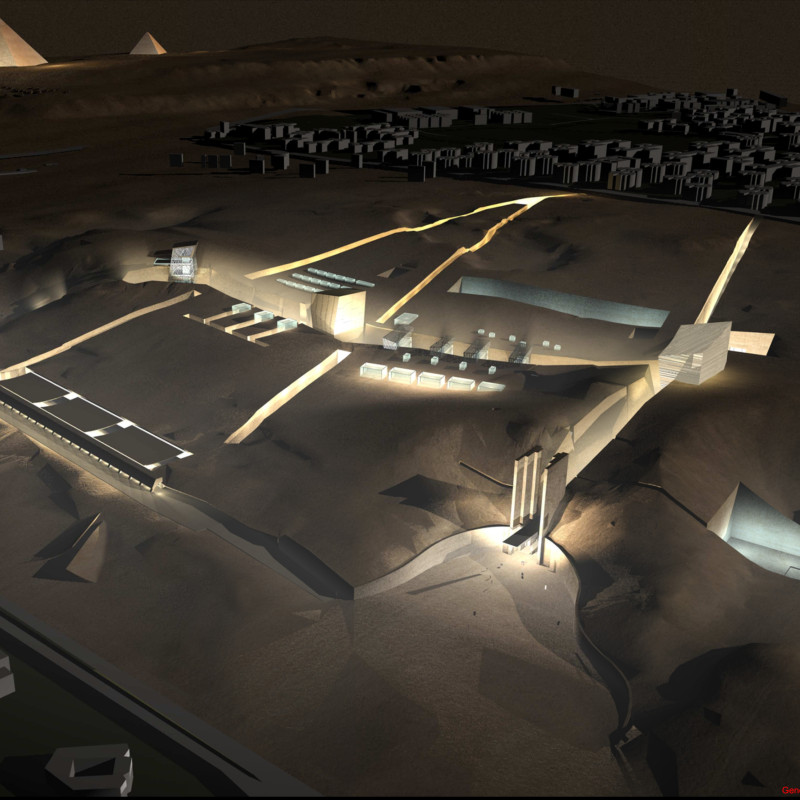5 key facts about this project
## Architectural Design Analysis Report
### Overview
The project is located in proximity to the Pyramids of Giza, Egypt, within a historically and culturally significant context. Its primary aim is to harmonize contemporary architectural practices with the legacy of ancient heritage, facilitating interactions between modern infrastructure and its historical surroundings.
### Spatial Strategy and Configurations
The general site layout demonstrates a deliberate organization of pathways that guide visitors through distinct functional zones. Notable elements include cultural exhibition halls dedicated to showcasing artifacts and narratives related to ancient Egypt, as well as research and educational facilities designed to support scholarly activities. Complementary visitor amenities, such as cafes and rest areas, enhance the overall experience. The architectural form encourages exploration through a flowing circulation pattern, inviting engagement with both the structure and the landscape.
### Material Selection and Sustainability
Materiality is a key focus in this design, emphasizing local and sustainable options that resonate with the site's historical context. Limestone, mimicking the stone used in the construction of the pyramids, serves as a primary material, creating continuity with the past. Glass is strategically integrated to promote transparency and connect the indoor environment with the outdoor setting, while concrete is employed for its strength and versatility in modern construction. The conscientious selection of materials reflects a commitment to sustainability, aligning with contemporary architectural trends and emphasizing minimal environmental disruption.
The design also features strategic light management through the placement of openings and reflective surfaces, enabling natural illumination to enhance the spatial experience. This interaction not only creates dynamic light patterns throughout the day but also draws inspiration from ancient temple designs. Overall, the project balances modern design with respect for cultural heritage, providing a functional and educational resource that encourages visitor interaction and exploration.



















































